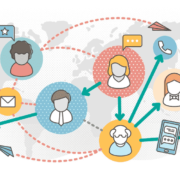What to Look for in a Content Marketing Agency for Senior Living
When it comes to online search, content is still king. The words you use on your senior living website, blog, and social channels matter—big time.
If you’re thinking about working with a content marketing agency, here’s what to look for as you research your options.
Does the content marketing agency offer only writing services? Or can it provide a strategy as well?
Strategy informs the writing. But here’s the thing: A good content strategist doesn’t always translate into being a good writer. And a good writer doesn’t always make for a good strategist. Ideally, look for a content marketing agency that can deliver both.
Questions to ask:
- How do they conduct their strategy work? How involved are the clients? (You should absolutely have input.)
- How do they communicate strategy to the writer or writers?
- How do they monitor the writer’s content to make sure it’s on track with the strategy?
- How do they measure the content and the strategy’s overall effectiveness? What metrics do they use?
Does the agency have writers in-house? Or does it farm out everything?
It’s perfectly OK if a content marketing agency uses freelance writers. Not all agencies can employ dozens of writers. But a reputable agency should have a core staff and a solid stable filled with good freelancers. Think of it like starting pitchers and bullpens. To have a winning team, you need both.
What you want to avoid, however, is the firm that claims it’s a content marketing agency, but it outsources everything to another firm, or it outsources all writing to cheap resources. The former situation results in marked-up prices. The latter usually results in weak copy.
When it comes to writing, this old chestnut always holds true: You get what you pay for. If you want your content to convert leads into move-ins, then you need capable writers who can write compelling copy.
Do the writers understand the tenets of search engine optimization (SEO)?
Lots of great writers exist out there. But not all of them understand SEO—or how to write optimized content without sounding awkward.
- Ask the agency about its writers’ backgrounds, particularly if they hold any relevant certifications, like HubSpot’s content marketing certification.
- Ask for examples of high-converting content and see how the content reads. If you’re familiar with SEO, review relevant SEO items, such as the title tag, meta description, and formatting of the content itself (headlines, sub-headlines, bulleted lists, and so forth).
Do the writers and content strategists have experience in senior living?
While this isn’t a must-have, it can be extremely helpful to work with writers and content strategists who already have working knowledge of the senior living industry. If they don’t have any experience, ask the agency how it gets writers up to speed when collaborating with clients in new industries.
What to look for in their answers:
- Buyer personas. If the content marketing agency asks about your buyer personas and/or recommends starting with this work, that’s a good sign.
- Keyword research. A good content marketing agency should discuss its approach to keyword research, since this work will shed valuable light on the industry itself. (Keyword research might come up during the SEO discussion as well.)
Can the content marketing agency provide examples of content and strategy that delivered big ROI?
Remember, strategy and copy go together like peanut butter and jelly. Reputable content marketing agencies shouldn’t have any qualms about sharing examples of strategies and content that converted.
If the agency has direct experience in senior living, make sure you ask to see industry-specific examples of blog posts and premium content, like guides and e-books. Ask specifically about conversions: marketing-qualified leads to sales-qualified leads to move-ins. After all, increasing occupancy is the number one goal for senior living communities.
Do you like the agency’s content?
A content marketing agency should be putting its best face forward on its website and in its marketing materials. This means compelling, clear, and clean copy.
- How does the site read?
- Does the copy have personality?
- If the agency has a blog, is it regularly updated with interesting content?
- Does the agency offer premium content, like e-books and white papers? If yes, what’s the copy “experience” like from landing pages to thank-you emails?
- How about social media? What do you think of the voice, the content, and the topics being discussed in different social media channels?
- Does the site have a team page with bios? Do the writers’ bios demonstrate strong experience? (Check out the various writers’ LinkedIn profiles for further insights, including any public endorsements.)
Listen to your gut. If you’re not liking the agency’s own website or you spot errors (like grammar issues), move on.












